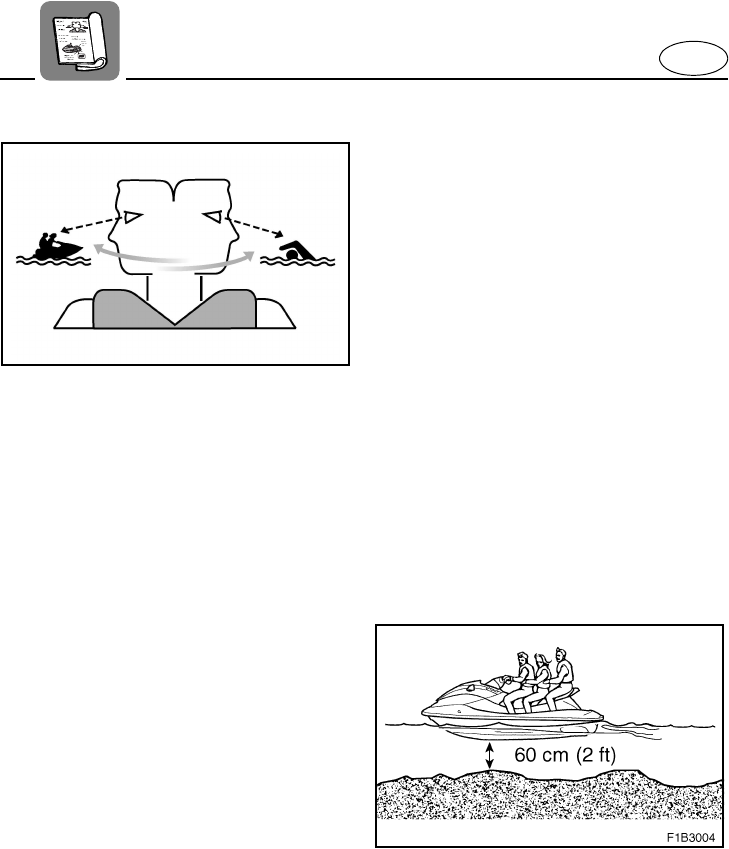
1-11
E
EJU10011
Cruising limitations
●
Scan constantly for people, objects, and
other watercraft. Be alert for conditions
that limit your visibility or block your vision
of others.
●
Operate defensively at safe speeds and
keep a safe distance away from people,
objects, and other watercraft.
●
Do not follow directly behind watercraft or
other boats.
●
Do not go near others to spray or splash
them with water.
●
Avoid sharp turns or other maneuvers
that make it hard for others to avoid you or
understand where you are going.
●
Avoid areas with submerged objects or
shallow water.
●
Take early action to avoid collisions.
Remember, watercraft and other boats do
not have brakes.
●
Do not release the throttle when trying to
steer away from objects—you need throt-
tle to steer. Always check throttle and
steering controls before starting the
watercraft.
●
Ride within your limits and avoid aggres-
sive maneuvers to reduce the risk of loss
of control, ejection, and collision.
●
This is a high performance boat—not a
toy. Sharp turns or jumping wakes or
waves can increase the risk of back/spinal
injury (paralysis), facial injuries, and bro-
ken legs, ankles and other bones. Do not
jump wakes or waves.
●
Do not operate the watercraft in rough
water, bad weather or when visibility is
poor; this may lead to an accident caus-
ing injury or death. Be alert to the possi-
bility of adverse weather. Take note of
weather forecasts and the prevailing
weather conditions before setting out on
your watercraft.
●
As with any water sport, you should not
operate your watercraft without someone
else nearby. If you operate further than
swimming distance from shore, you
should be accompanied by another boat
or watercraft, but make sure you stay a
safe distance away. It’s good, common
sense!
●
Never operate in water that is less than
60 cm (2 ft) deep, otherwise you increase
your chance of hitting a submerged
object, which could result in injury.
UF1K11.book Page 11 Thursday, June 2, 2005 8:45 AM


















